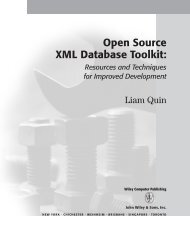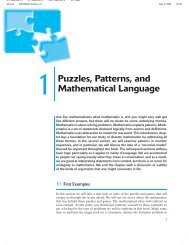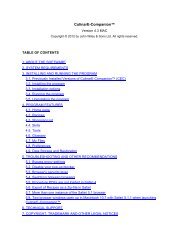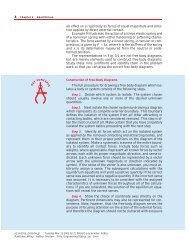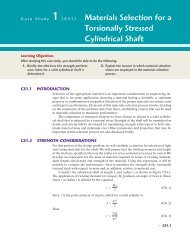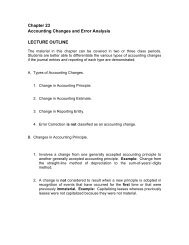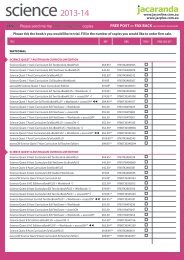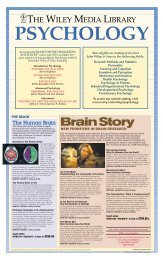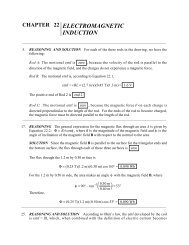Chapter Two - Wiley
Chapter Two - Wiley
Chapter Two - Wiley
You also want an ePaper? Increase the reach of your titles
YUMPU automatically turns print PDFs into web optimized ePapers that Google loves.
8956d_ch02_076 9/26/03 3:33 PM Page 76 mac76 mac76:385_reb:<br />
76 CHAPTER 2 A Further Look at Financial Statements<br />
operating activities was $34,900,000 in 2001 and $1,700,000 in 2000. Assume that average<br />
shares outstanding during all of fiscal 2001 were 22.9 million and were 18.4<br />
million during all of fiscal 2000. There was no preferred stock outstanding.<br />
The stock price was $13.64 on September 30, 2001, and $36.31 on September<br />
30, 2000.<br />
Instructions<br />
Using these statements, answer the following questions:<br />
1. Calculate the current ratio for Tweeter for 2001 and 2000 and the current cash<br />
debt coverage ratio for 2001, and discuss its liquidity position.<br />
2. Calculate the debt to total assets ratio for Tweeter for 2001 and 2000 and the<br />
cash debt coverage ratio for 2001, and discuss its solvency.<br />
3. Calculate the earnings per share and price-earnings ratio for Tweeter for 2001<br />
and 2000, and discuss its change in profitability.<br />
4. Best Buy’s accounting year-end was March 3, 2001, whereas Tweeter’s was September<br />
30, 2001. How does this difference affect your ability to compare their<br />
profitability?<br />
Solution<br />
1. Current ratio:<br />
2001 ($171.3$100.8) 1.70 2000 ($138.9$55.4) 2.51<br />
Tweeter’s liquidity declined from 2000 to 2001. In 2000 there was $2.51 of current<br />
assets available for every dollar of current liabilities. In 2001 there was<br />
$1.70. Tweeter’s 2001 current ratio would probably be considered acceptable,<br />
but not strong. It is higher than that of Best Buy, but it is a much smaller company<br />
than Best Buy. Often, larger companies can get by with a lower current<br />
ratio.<br />
Current cash debt coverage ratio:<br />
$34.9<br />
2001 .45 times<br />
($100.8 $55.4)2<br />
A value above .40 times for this ratio is generally considered acceptable. This<br />
measure of .45 times reduces our concern about Tweeter’s marginal current<br />
ratio.<br />
2. Debt to total assets ratio:<br />
2001 ($148.0$480.4) 31% 2000 ($60.1$235.0) 26%<br />
Based on the change in its ratio of debt to total assets, Tweeter’s reliance on debt<br />
financing increased from 2000 to 2001. The increase in the value of this ratio<br />
suggests the company’s solvency declined.<br />
Cash debt coverage ratio:<br />
$34.9<br />
2001 .34 times<br />
($148.0 $60.1)2<br />
Tweeter’s value of .34 times is higher than the generally acceptable level of .20<br />
times. This would suggest that the company’s solvency appears good.<br />
3. Earnings per share:<br />
2001 ($16.922.9) $0.74 per share 2000 ($16.418.4) $0.89 per share<br />
Price-earnings ratio:<br />
2001 ($13.64$0.74) 18.4 2000 ($36.31$0.89) 40.8



